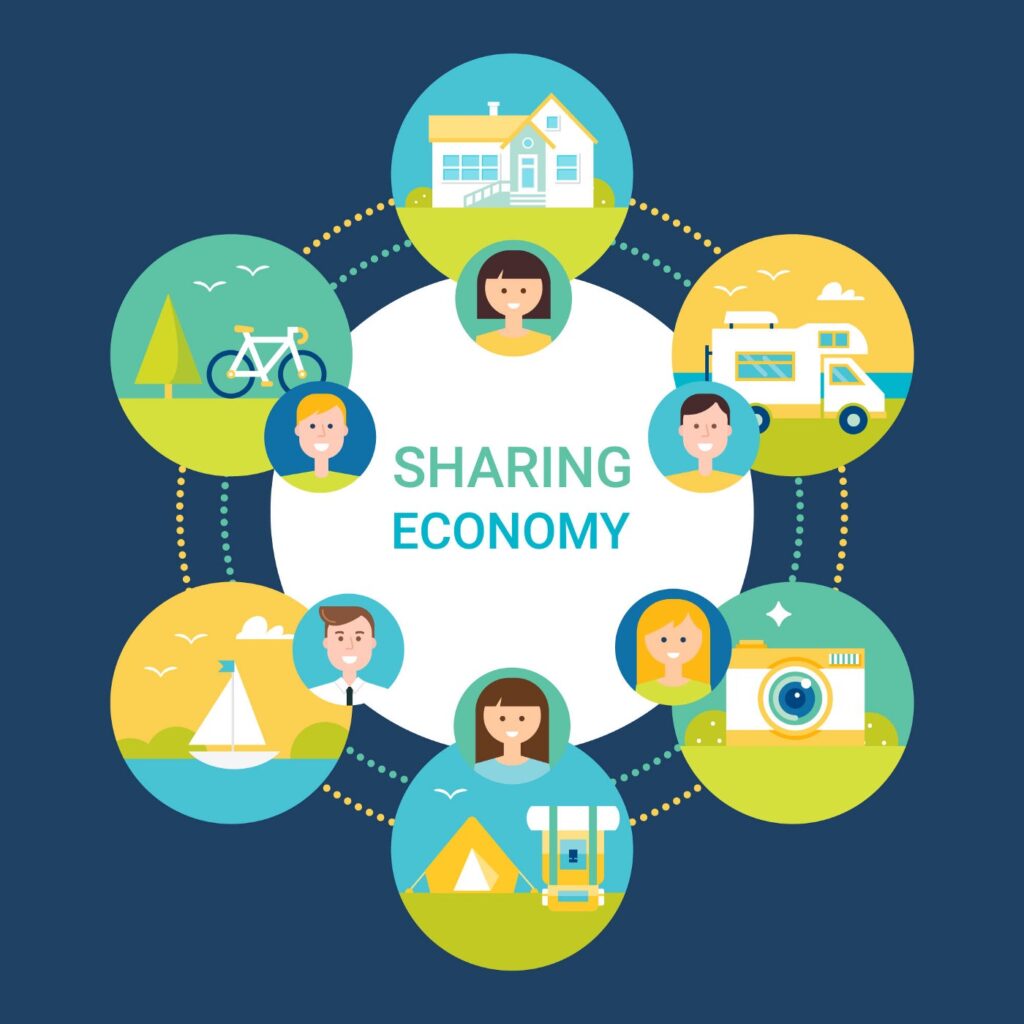The sharing economy and the circular economy are two separate but related concepts that have gained significant attention in recent years. The sharing economy refers to the growing trend of individuals and businesses sharing resources, such as vehicles, accommodation, and tools, rather than owning them outright. The circular economy, on the other hand, is an economic model that aims to keep resources in use for as long as possible, and to minimize waste and pollution.
The intersection of the sharing economy and the circular economy is an area of growing interest, as both concepts have the potential to contribute to a more sustainable and equitable society. In this article, we will explore how the sharing economy can support the circular economy, and vice versa.
The sharing economy is often seen as a way to increase the efficiency and utilization of resources, by allowing individuals and businesses to share access to goods and services, rather than owning them outright. This can help to reduce the need for new resource extraction, and can also help to prolong the life of existing resources. For example, a car-sharing service can reduce the number of cars on the road, as well as reduce the need for new car manufacturing. Similarly, a tool-sharing service can reduce the need for individuals to purchase tools they only use occasionally, and can also help to prolong the life of existing tools.
The sharing economy can also support the circular economy by reducing waste and pollution. For example, a clothing rental service can reduce the amount of clothing that ends up in landfills, as individuals can rent clothes for special occasions, rather than purchasing them. Similarly, a meal-sharing service can reduce food waste, by allowing individuals to share leftovers and surplus food with others.
The circular economy can also support the sharing economy, by providing a framework for designing and producing goods and services that are more sustainable and resilient. For example, a circular economy-based business model can help to create products that are designed to be reused, repaired, and recycled, rather than thrown away. This can help to reduce the need for new resource extraction, and can also help to prolong the life of existing resources.
Furthermore, circular economy-based business models can also help to create more equitable and inclusive sharing economy platforms, by prioritizing the needs of marginalized and under-served communities. For example, a circular economy-based car-sharing service can prioritize access for low-income communities, who may not be able to afford to own a car outright. Similarly, a circular economy-based tool-sharing service can prioritize access for small-scale farmers, who may not have the resources to purchase expensive tools.
In conclusion, the intersection of the sharing economy and the circular economy is an area of growing interest, as both concepts have the potential to contribute to a more sustainable and equitable society. The sharing economy can support the circular economy by increasing the efficiency and utilization of resources, and by reducing waste and pollution. The circular economy can also support the sharing economy by providing a framework for designing and producing goods and services that are more sustainable and resilient, and by creating more equitable and inclusive sharing economy platforms.
While the sharing economy and the circular economy are two separate but related concepts, there is a growing interest in how they can support each other, and how they can work together to create a more sustainable and equitable society. By understanding the ways in which the sharing economy and the circular economy can intersect, we can better design sharing economy platforms and circular economy business models that are more effective, efficient, and equitable.






